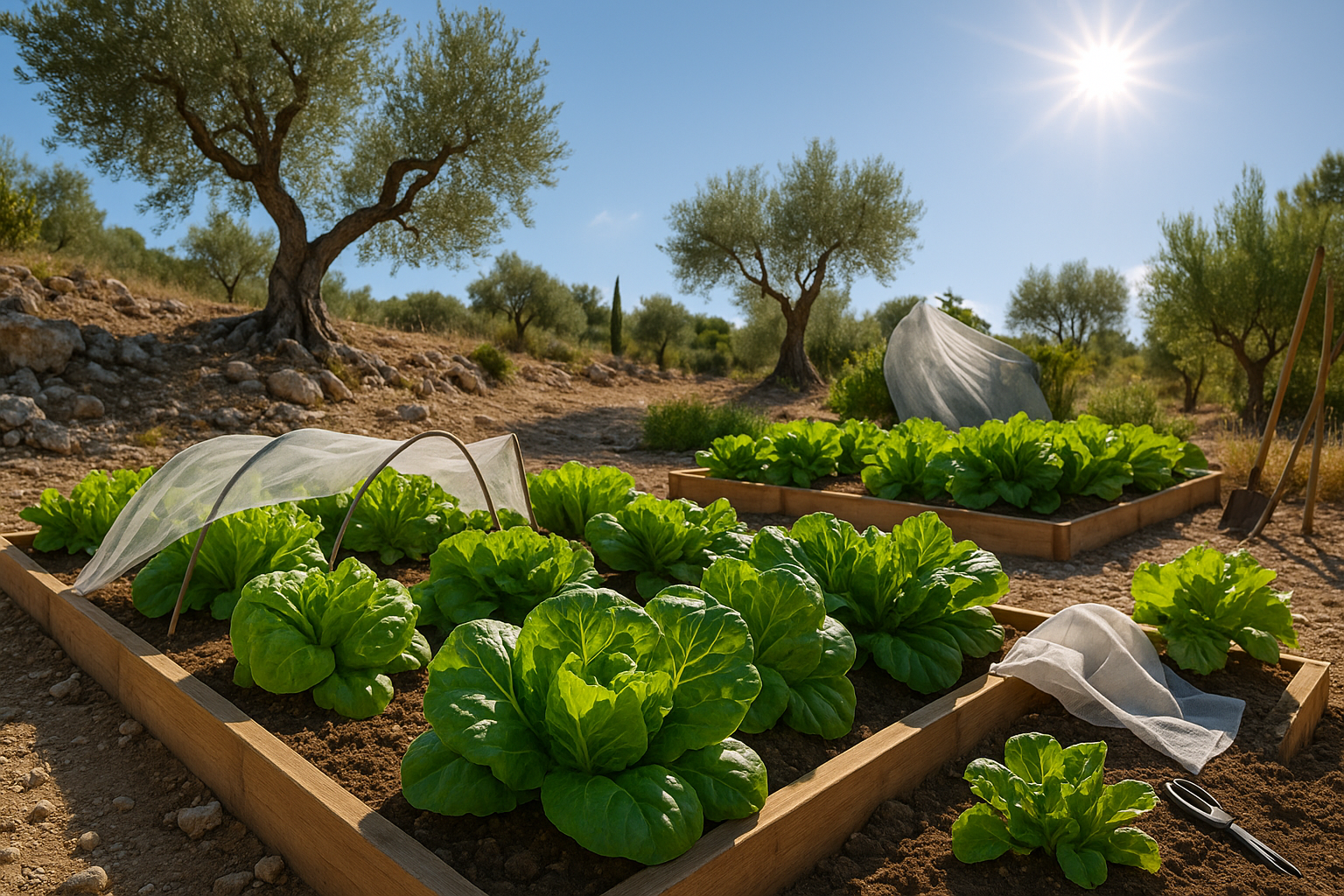Introduction to Mediterranean Climates
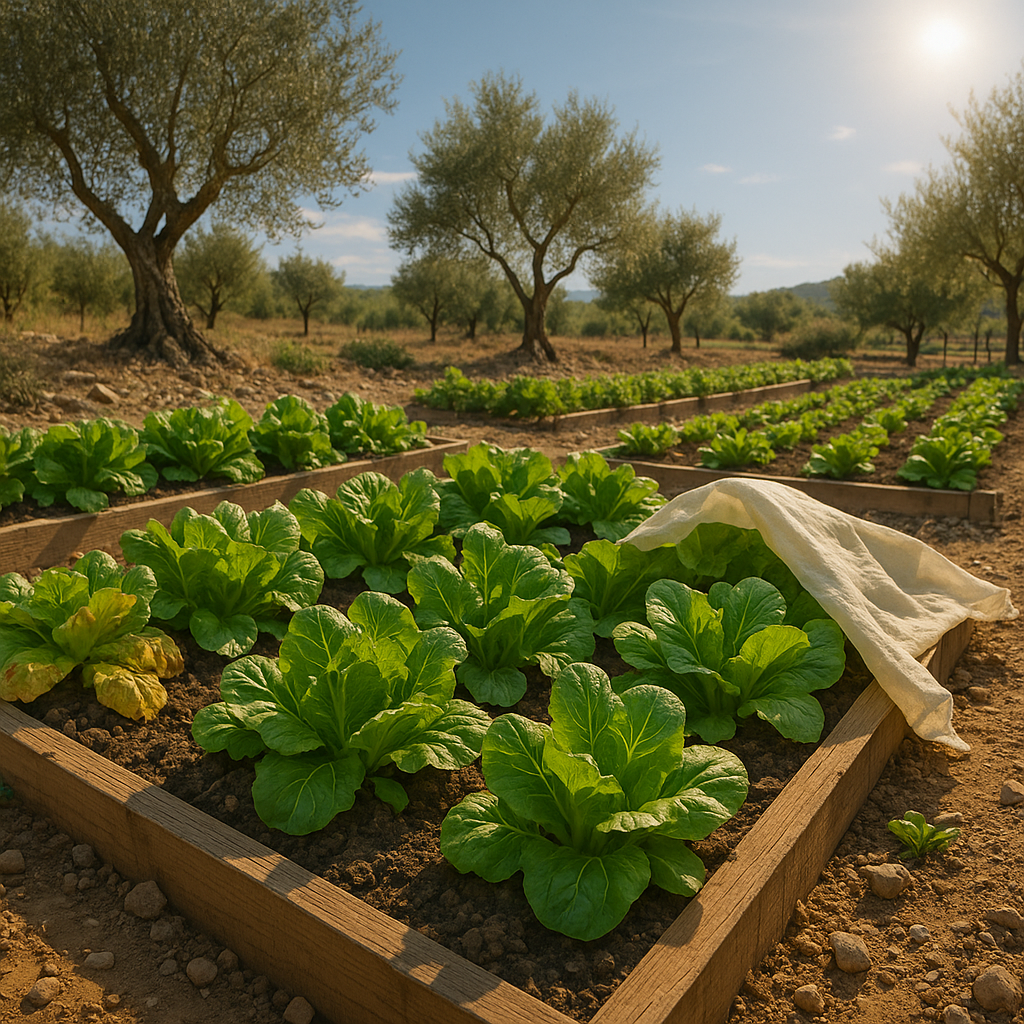
Growing lettuce in Mediterranean climate regions comes with its own unique challenges and advantages. These climates are known for their mild, wet winters and hot, dry summers—a dreamy combination for many plants but not always straightforward for leafy greens like lettuce.
If you live in places like California, coastal Australia, southern Europe, or parts of South Africa, you’re familiar with how quickly the weather can shift from rainy and cool to bright and scorching. This distinct climate offers benefits for lettuce growers, such as extended winter growing seasons and few frosty nights that could damage tender leaves. On the flip side, those famous hot, dry summers can cause lettuce to bolt (produce seeds too early), turn bitter, or wilt before it’s ready for harvest.
Gardeners often face unpredictable rainfall patterns, fast-draining soils, and intense sunshine, which means getting creative is key. Using light shade cloth, mulching to retain moisture, or sowing successions to extend the harvest window can make a big difference.
Growing lettuce in Mediterranean climates isn’t impossible—far from it. With the right strategies, you can enjoy bowlfuls of crisp, homegrown greens long after your neighbors’ gardens have withered in the heat. In this blog post, you’ll find practical, actionable tips designed specifically for Mediterranean conditions, ensuring you get the tender, flavorful lettuce you crave—no matter how intense the summer or unpredictable the winter.
Choosing the Right Lettuce Varieties
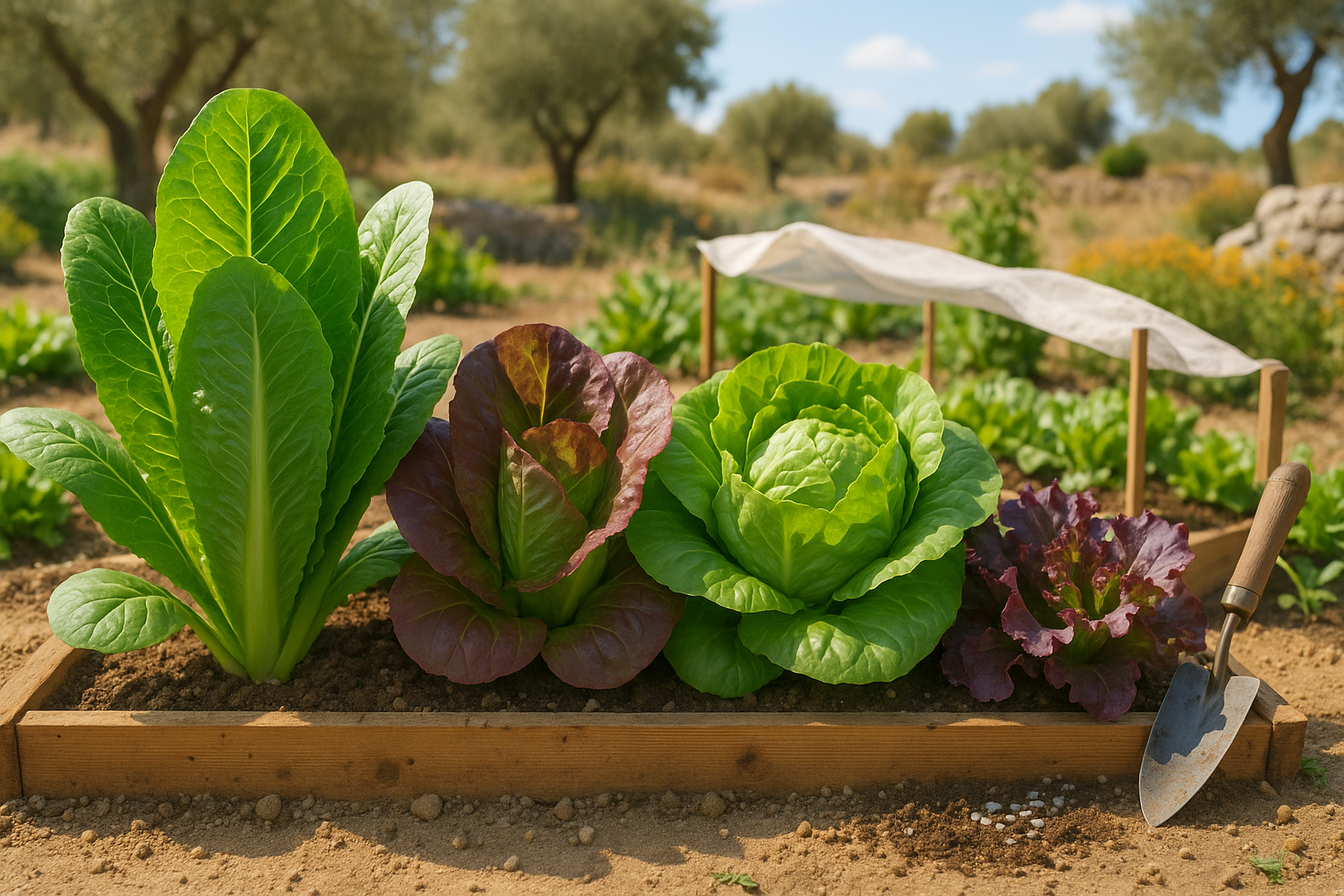
Selecting the right lettuce varieties is key to a thriving, flavorful harvest, especially in Mediterranean climates where warm days can challenge traditional greens. Romaine, with its crisp texture and upright growth, is a reliable choice—particularly heat-tolerant selections like ‘Parris Island Cos’ or ‘Jericho,’ both bred for slow bolting and crisp leaves even as temperatures rise.
Butterhead lettuces such as ‘Buttercrunch’ and ‘Capitata’ thrive with a tender sweetness and decent bolt resistance, making them perfect for spring through early summer planting. Crisphead or iceberg lettuces tend to be less forgiving in heat, but modern cultivars like ‘Great Lakes’ offer improved resilience.
Loose-leaf lettuces, with their variable leaf shapes and colors, excel in succession planting and include sturdy varieties like ‘Red Sails’ or ‘Salad Bowl,’ which maintain flavor and texture despite high sun.
For best results, start with certified seeds or healthy seedlings from reputable nurseries; local suppliers often stock types proven to perform in your specific microclimate. Look for packaging that specifies “bolt-resistant” or “heat-tolerant”—these traits help ensure tasty, non-bitter leaves during unpredictable warm spells.
To maximize both yield and freshness, practice succession planting: sow a small batch of seeds every two to three weeks, rotating varieties if desired. This not only keeps your table stocked with young, tender lettuce but also reduces the risk of losing your entire crop to a sudden heatwave.
Real-world tip: provide some afternoon shade or grow lettuce among taller, sun-tolerant vegetables like tomatoes or peppers to further reduce heat stress. By mixing and matching lettuce varieties and planting schedules, you can enjoy crisp, homegrown salads nearly year-round, even in regions with sizzling Mediterranean summers.
Soil, Planting, and Fertilization Secrets
Healthy lettuce starts with the right soil. Lettuce thrives in well-draining, fertile soil rich in organic matter—think loose, crumbly earth that doesn’t puddle after a good rain. To achieve this, regularly work in compost or well-rotted manure before planting. These amendments not only feed the soil but also improve its structure and water retention, which are key for lettuce’s shallow roots.
In rocky or heavy clay soils, adding organic matter like shredded leaves or coconut coir can further boost drainage. When it’s time to plant, you have two main options: direct sowing seeds or transplanting seedlings.
Direct sowing works well for early crops—scatter seeds thinly about 1/8 inch deep, cover lightly with soil, and keep the area consistently moist. For head lettuces or when dealing with unpredictable weather, transplants offer a head start; set young plants so their lowest leaves just touch the soil, spacing them about 6 to 12 inches apart, depending on the variety.
Timing is key in Mediterranean climates: sow outdoors in late winter for baby greens, continue in early spring for full heads before summer heat, and plant again in late summer to early fall for autumn harvests.
Lettuce appreciates a steady supply of nutrients, particularly nitrogen for lush, leafy growth. Feed with a balanced organic fertilizer or a fish emulsion every few weeks. Watch for pale or stunted leaves, which signal a need for more nitrogen, and consider supplementing with compost tea or a slow-release organic granular fertilizer.
As lettuce is sensitive to excess salts and overfeeding, err on the side of moderation and water regularly to keep nutrients accessible. With these soil, planting, and fertilization secrets, you’ll enjoy crisp, flavorful harvests all season long.
Watering and Irrigation Strategies
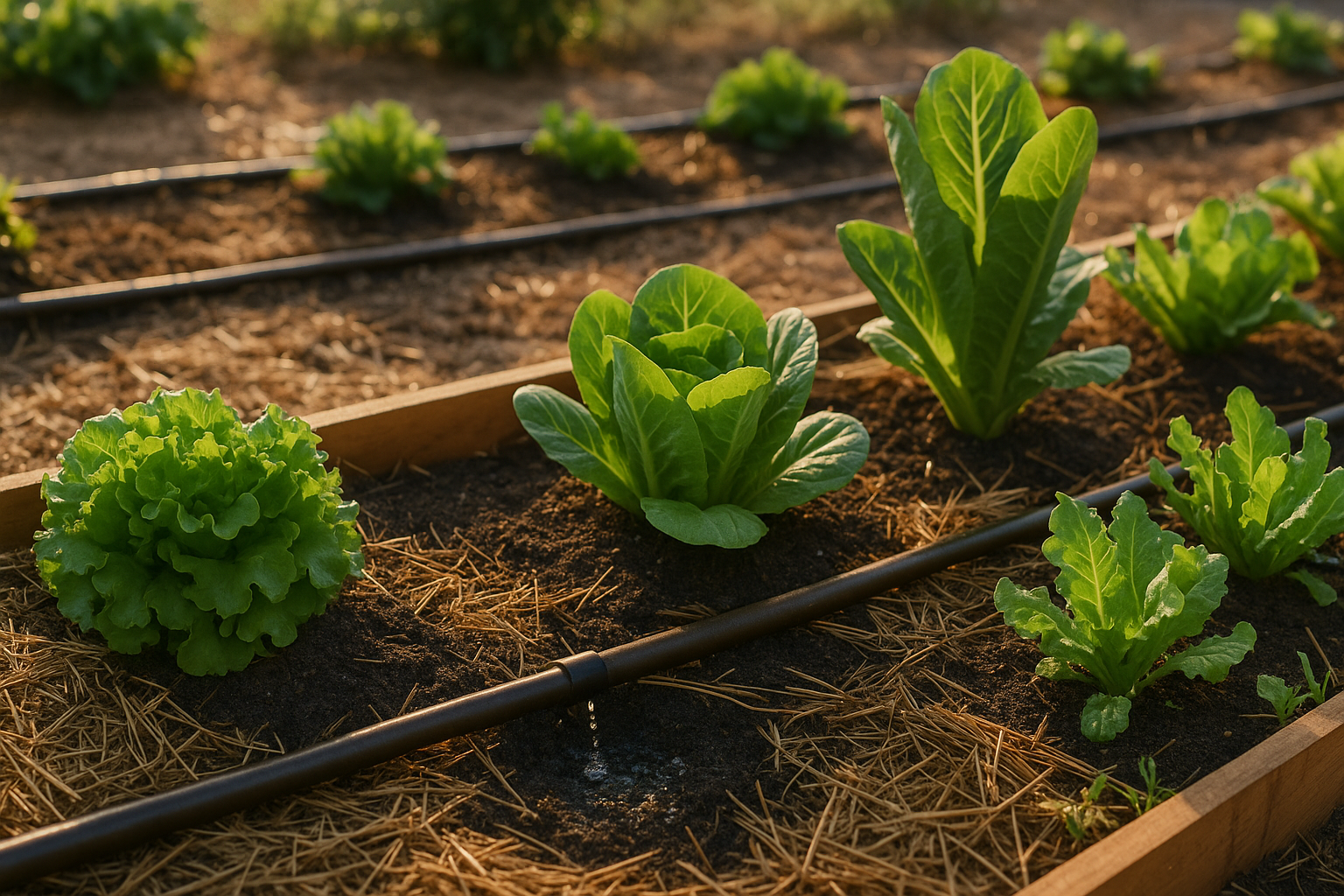
Managing water effectively during hot, dry Mediterranean summers is key to keeping your lettuce thriving. Aim to water deeply but less often, about two to three times per week, so roots learn to grow downward and access deeper reserves. The best time to water is early in the morning or later in the evening when the sun isn’t blazing—this reduces evaporation and ensures plants absorb more moisture.
Top your beds with a two- to three-inch layer of organic mulch, such as straw or leaf litter, to keep soil cool and help retain water between irrigations. For maximum efficiency, consider installing a drip irrigation system; these deliver water directly to plant roots, minimizing waste and promoting healthier growth. You can set them on timers to ensure regular moisture—especially effective in Mediterranean gardens, where rainfall is sparse.
Keep a close eye on your lettuce for signs of under-watering, like wilting leaves, slow growth, and a tendency toward bitterness or bolting (sending up a flowering stalk prematurely). Over-watering, on the other hand, might show up as yellowing leaves, root rot, or slimy spots at the base of the plant. Lettuce is particularly sensitive to inconsistent moisture, so don’t let the soil dry out completely or become soggy.
Consistent, moderate moisture is the secret to crisp, sweet-tasting leaves and helps prevent the stress that causes bitterness and bolting. If you’re unsure, check soil moisture regularly: stick your finger an inch or two into the dirt—if it feels dry, it’s time to water. Smart watering practices, combined with mulch and water-saving irrigation, can keep your lettuce lush and your water bill lower all season long.
Managing Heat, Pests, and Disease
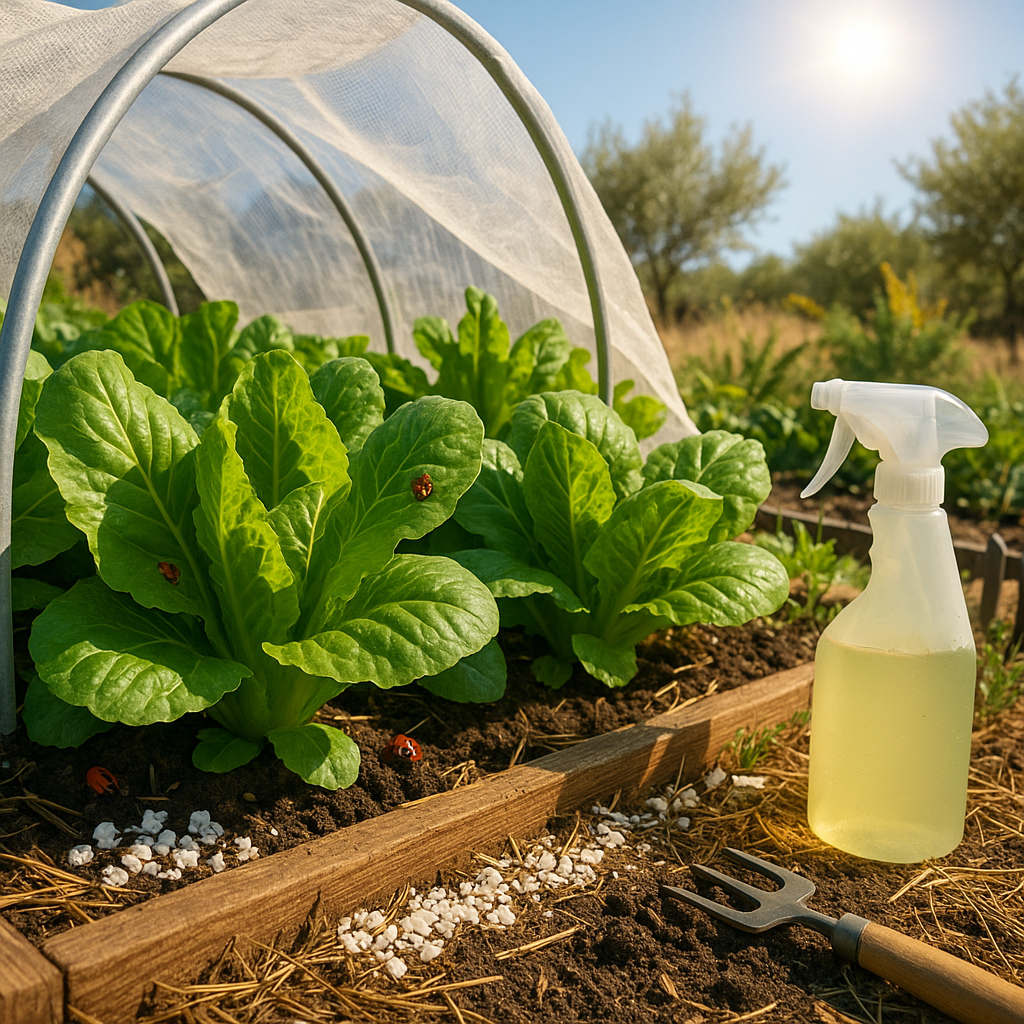
To keep your lettuce thriving under the intense Mediterranean sun, smart shading is key. Try using lightweight shade cloths (30-50% density) draped over hoops or frames to reduce heat stress during midday peaks. Temporary solutions like propping up an old bedsheet or using garden umbrellas can also protect your greens from sunburn.
Row covers made of breathable fabric, such as spun-bonded polyester, not only buffer against sudden heat spikes but also deter pests like aphids, snails, and slugs. These pests are especially active in warmer months; control aphids by attracting beneficial insects—ladybugs and lacewings—or by spraying a simple homemade solution of water and a drop of castile soap on the undersides of leaves.
For slugs and snails, evening handpicking is surprisingly effective in Mediterranean climates. Barriers like crushed eggshells or copper tape can also discourage their approach.
To prevent diseases, give plants ample space and water at the soil level, keeping leaves dry to limit the spread of powdery mildew, which thrives in high humidity. Bottom rot can be minimized by ensuring quick drainage and mulching with straw to keep lettuce heads off damp soil. Rotating crop locations seasonally will also reduce disease pressure in future plantings.
For peak flavor and fewer pest issues, harvest lettuce in the cool of early morning when leaves are crisp, sweet, and less appealing to both pests and the day’s rising temperatures. Regular picking not only stimulates new, tender growth but also helps stay ahead of pest infestations and disease—keeping your salads fresh, vibrant, and healthy all summer long.
Harvesting, Storage, and Extending the Season
Knowing the perfect time to harvest lettuce in Mediterranean climates can make all the difference between tender leaves and bitter, bolted plants. Lettuce is typically ready to pick when the leaves feel firm and crisp, display a healthy green color (or true-to-type red tones), and form a loose or tight head depending on the variety.
In these climates, you’ll often reach harvestable size around 30-60 days from seeding. Check individual leaves: they should bounce back after gently pressing—not limp or leathery—and avoid waiting until the center starts sending up a flower stalk, which signals the end of prime flavor.
For gentle harvesting, use clean scissors or a sharp knife to cut outer leaves a few inches above the base; this “cut-and-come-again” method allows the plant to regrow from the center. Alternatively, for head lettuce, slice the whole plant off just above the soil.
After harvest, bring the leaves inside promptly and rinse with cold water to remove field heat. Dry thoroughly with a salad spinner or lay leaves on a towel, then store in a loosely closed container or perforated bag in the refrigerator crisper drawer. Adding a dry paper towel can absorb excess moisture and keep leaves crunchy longer—especially important in warm weather.
To extend your harvest window, try these tips:
- Stagger plantings every 2-3 weeks (succession planting)
- Set up shade cloth during peak afternoon heat
- Use lightweight row covers to protect young plants from unseasonal heat or sudden cold snaps
These simple steps ensure a continuous, fresh supply of homegrown lettuce throughout the season.
Final Tips & Common Mistakes to Avoid
Growing lettuce in Mediterranean climates can be rewarding with a few key strategies. Opt for heat-tolerant varieties, like Butterhead or Romaine, to extend your season and avoid the common mistake of bolting, which happens quickly in warm weather. Timing is everything—aim to sow seeds in early spring and again in late summer, skipping the peak of the hottest months to minimize stress on your plants.
Watering is another crucial factor; lettuce needs consistently moist soil but dislikes waterlogged roots. Try using a drip irrigation system or thoroughly soaking the soil in the early morning to reduce evaporation and prevent fungal issues. Beginners often overwater or let the soil dry out completely—check the top inch of soil for moisture before watering.
Be patient and observant with your crop, making notes about which planting times and varieties perform best in your microclimate. Don’t be afraid to experiment with shade cloth or companion planting; sometimes small adjustments make a big difference. Remember, gardening is a process of learning from each season, so celebrate your successes and see each mistake as a valuable opportunity to grow as a gardener.
